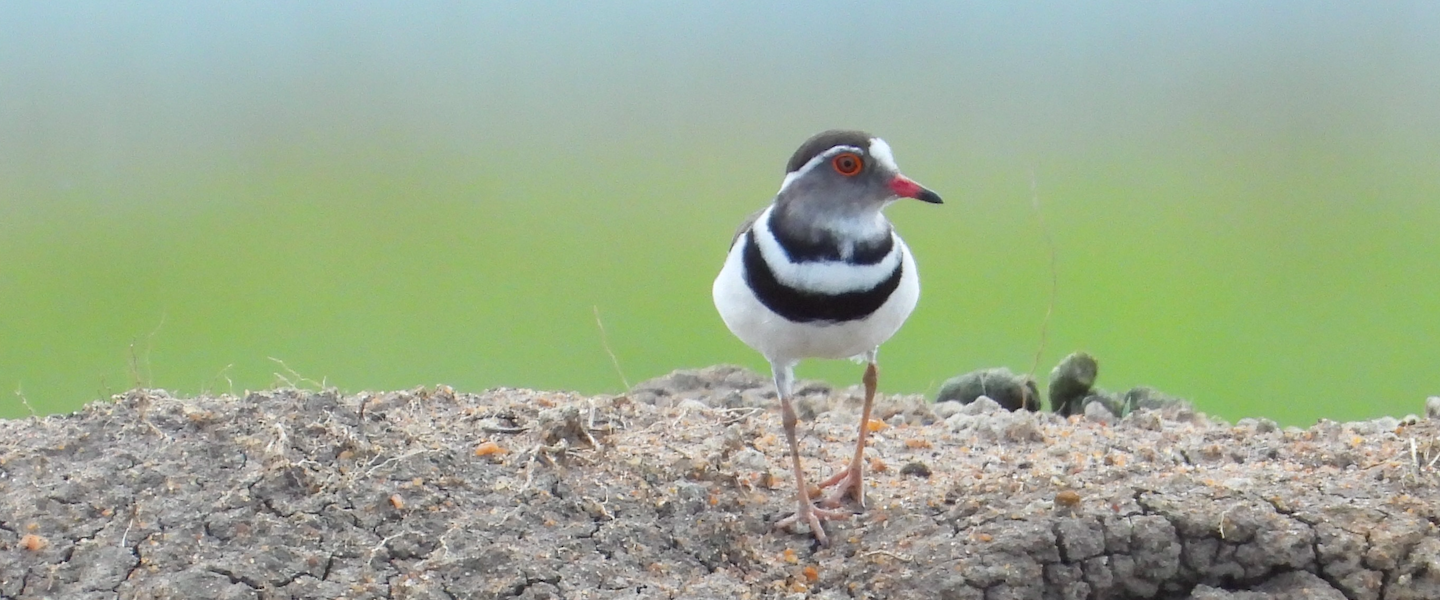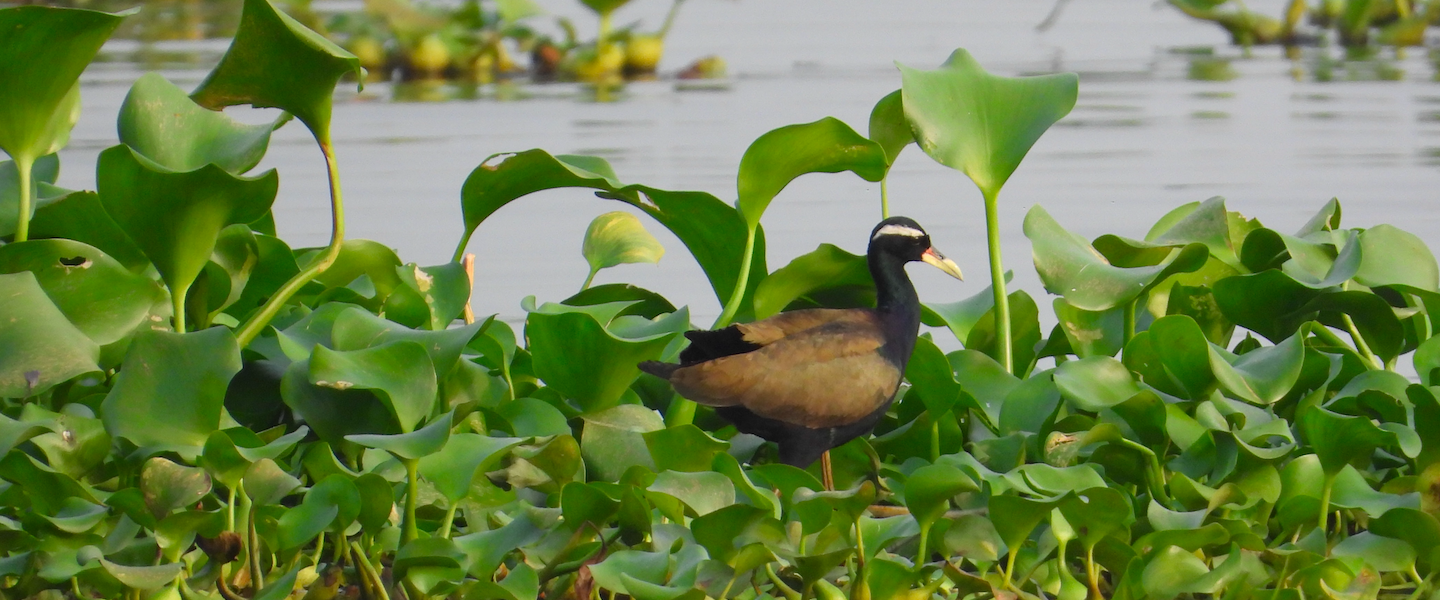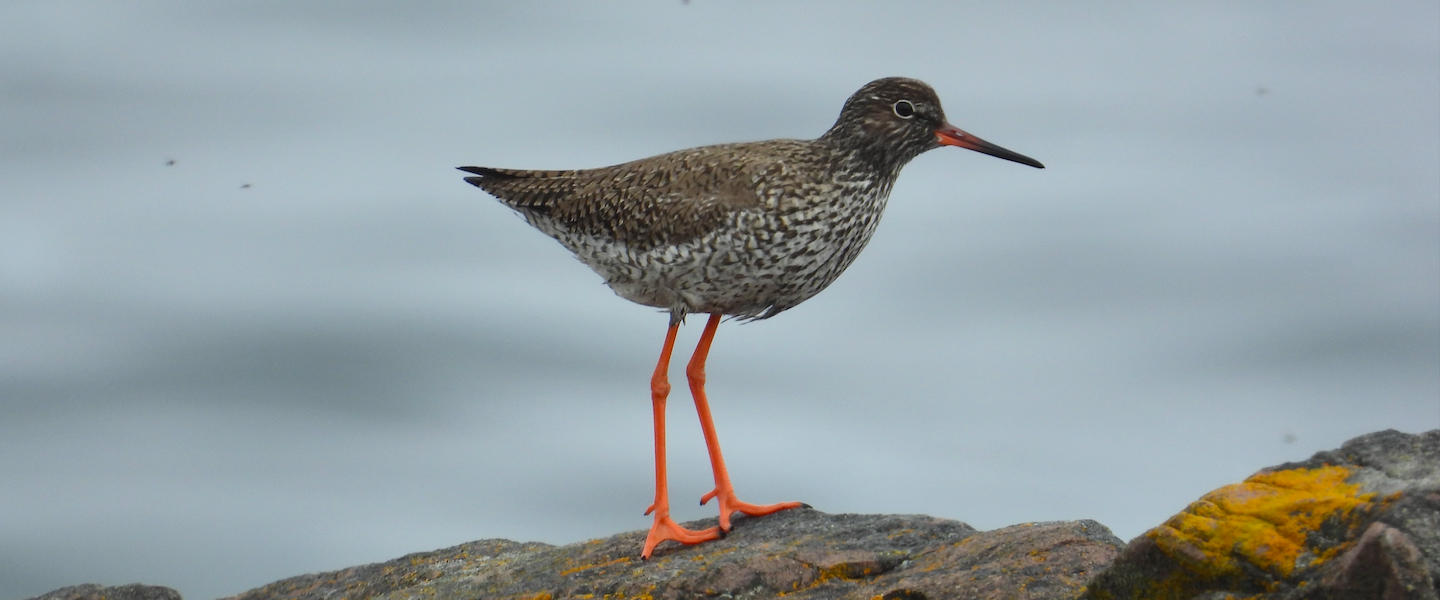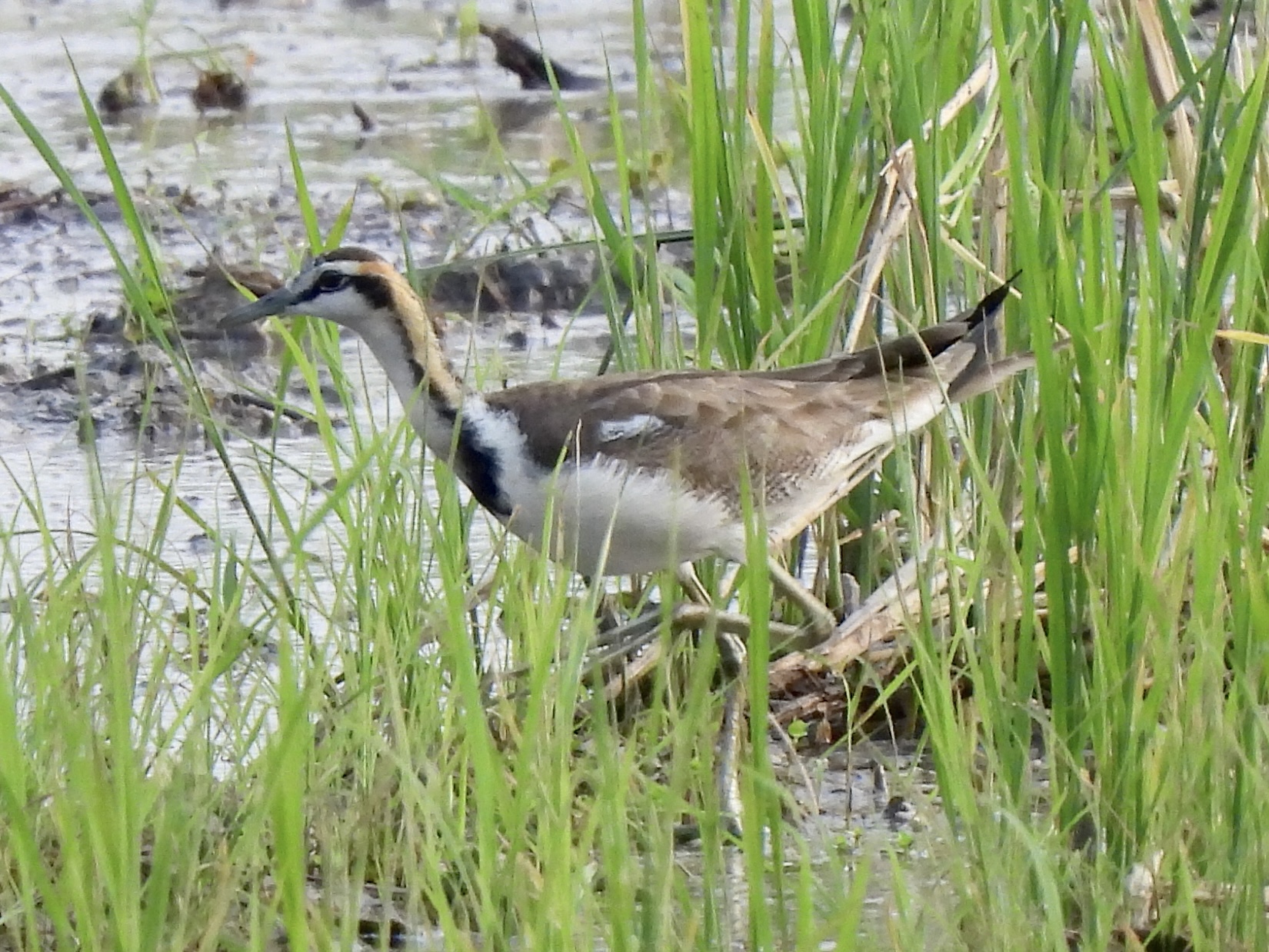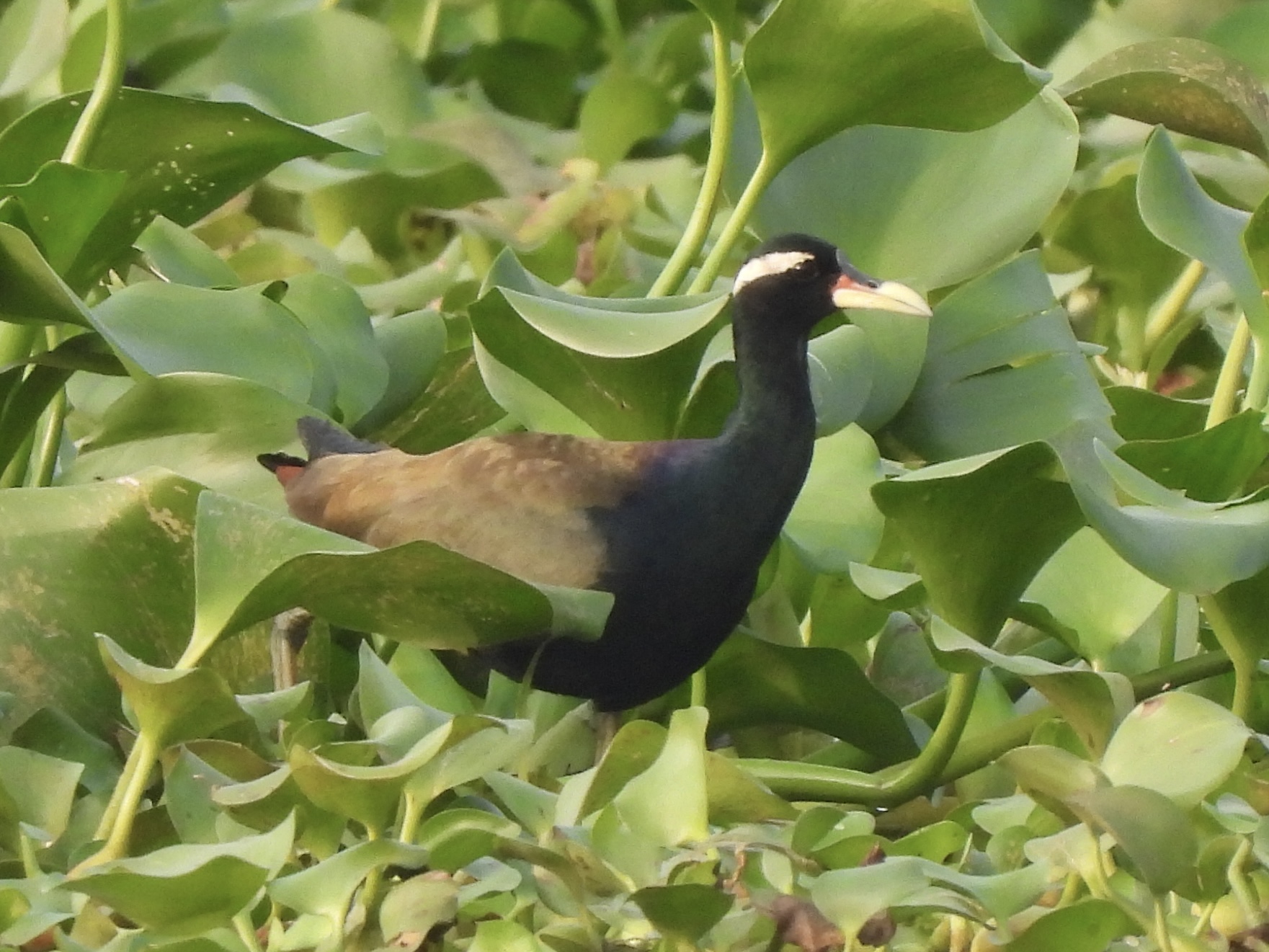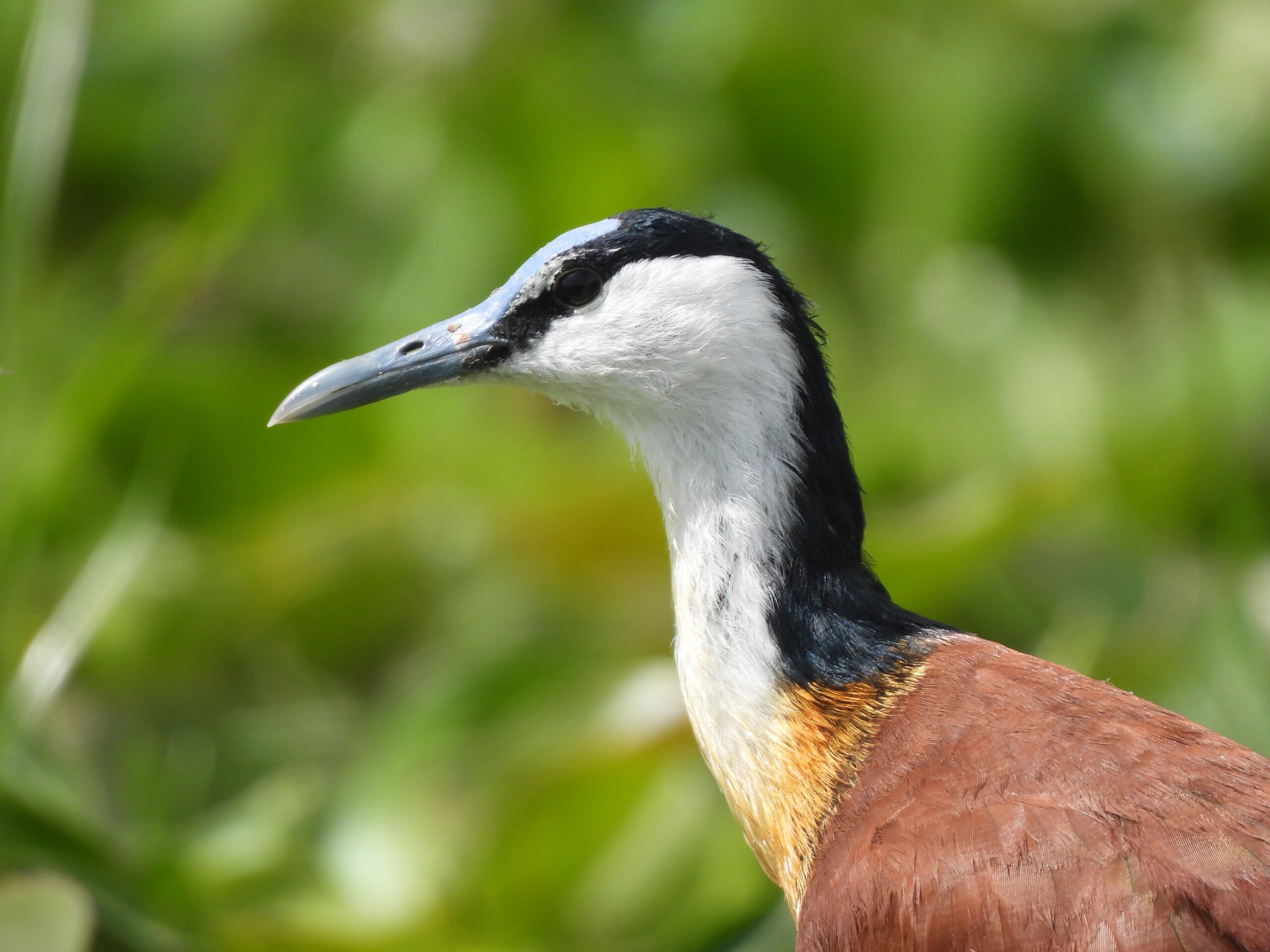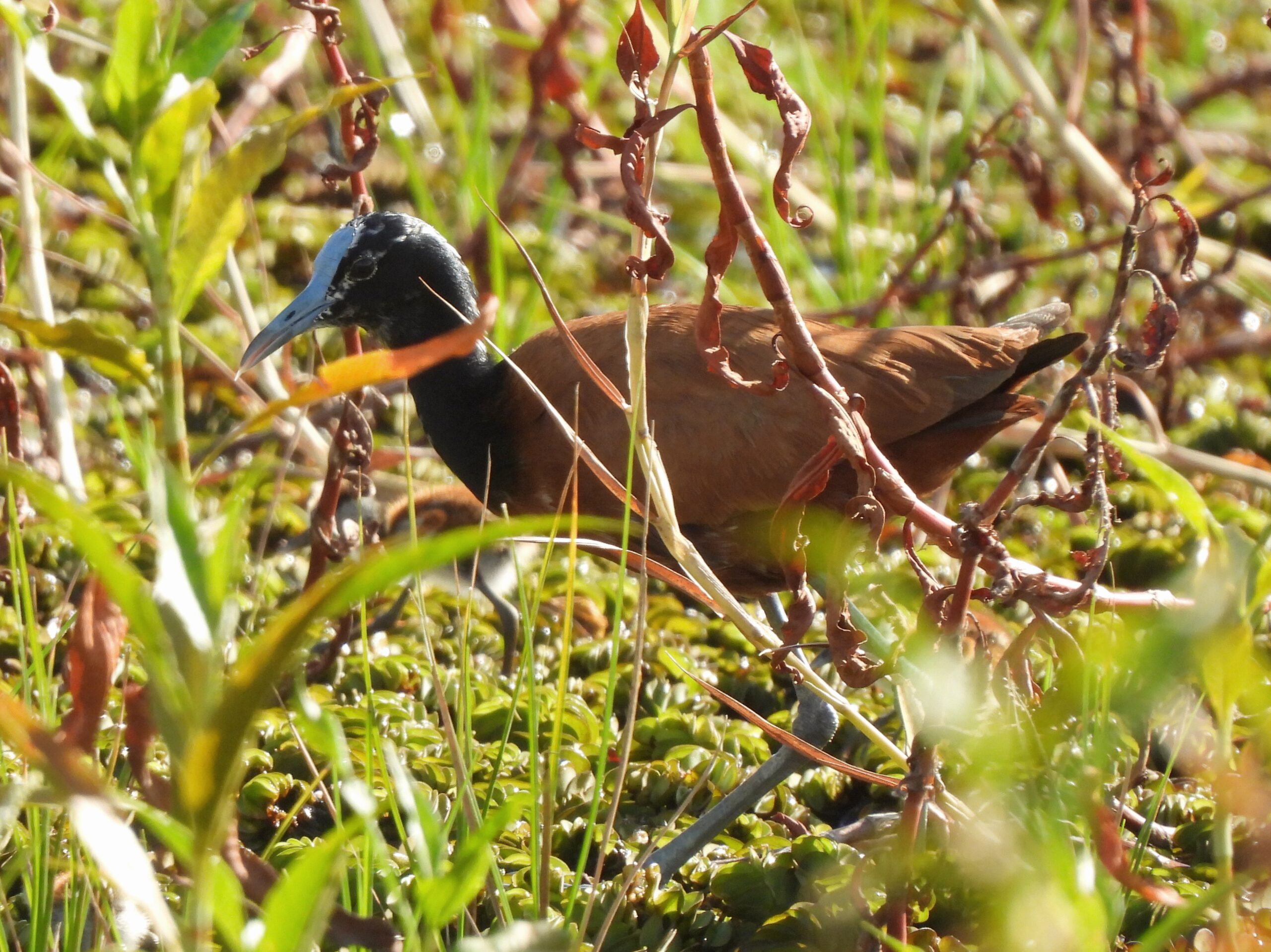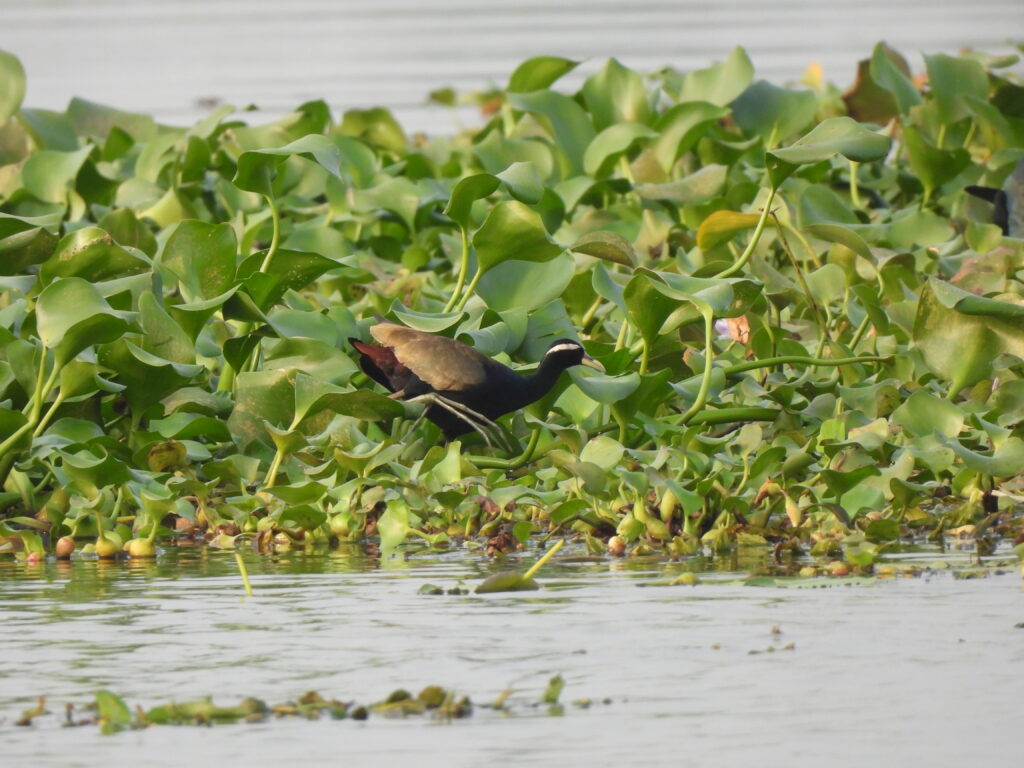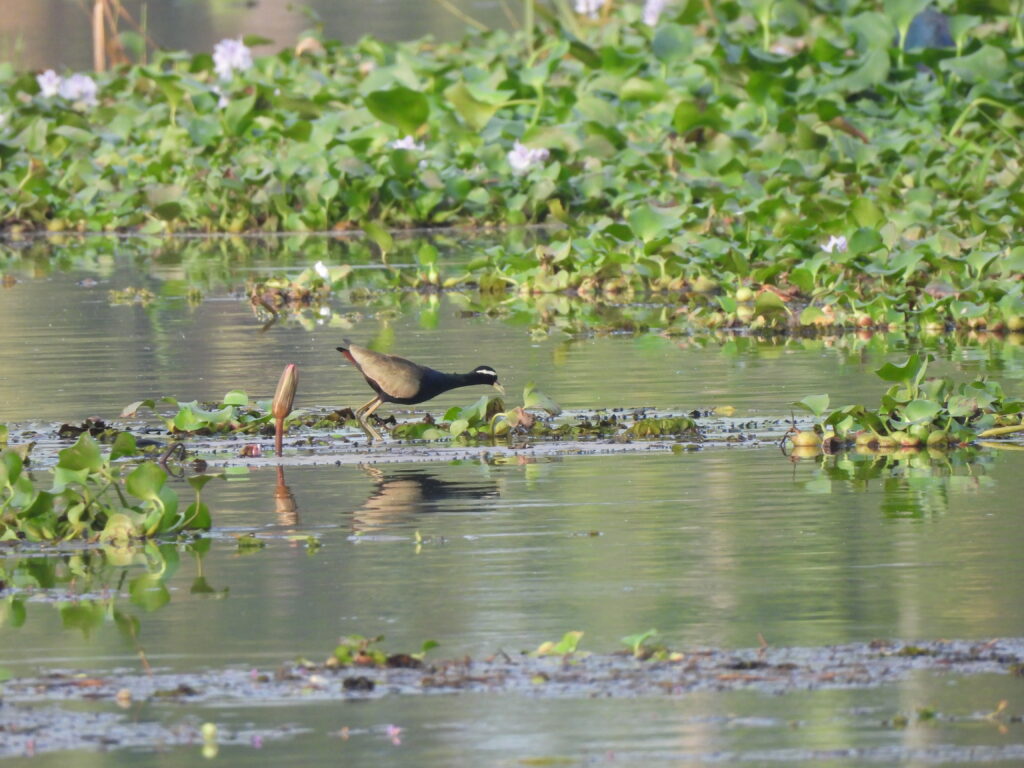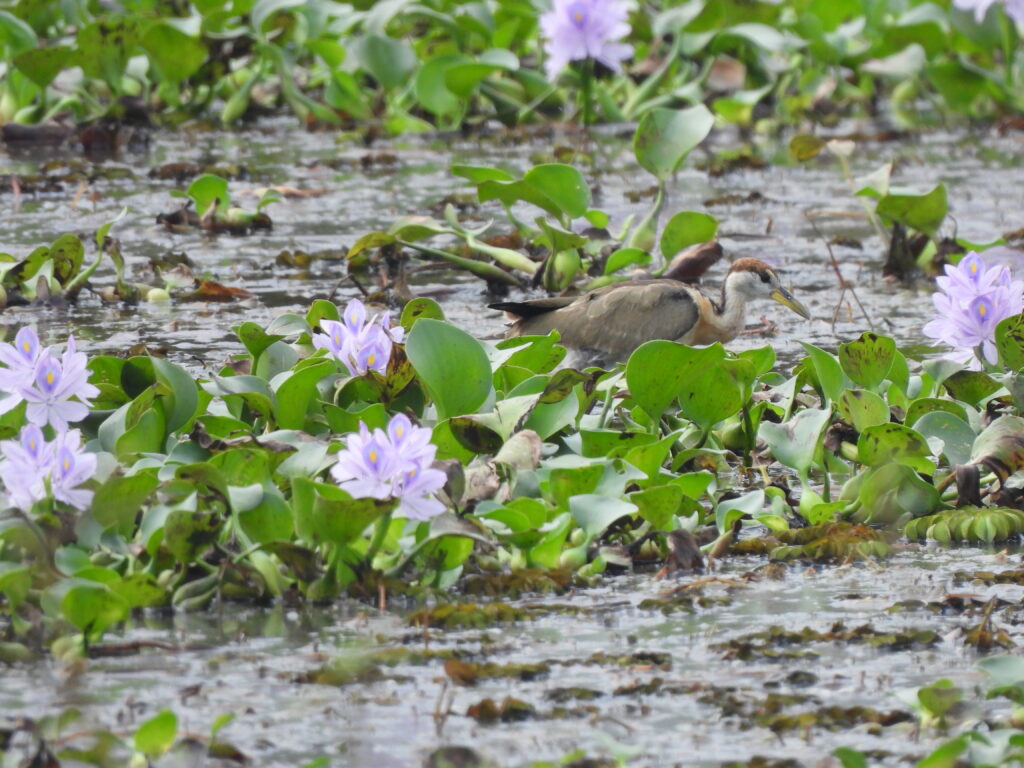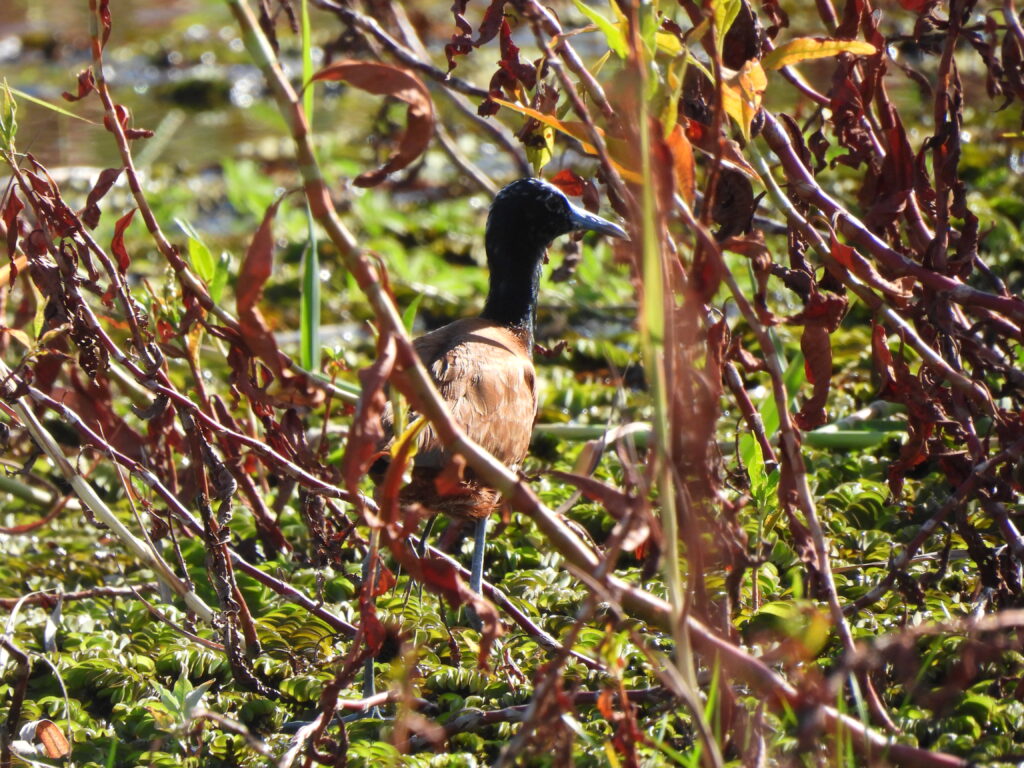The jacanas (family Jacanidae) are a family of birds belonging to the order Charadriiformes, often regarded as shorebirds. These charismatic birds of lakes and ponds have a circumtropical distribution and forage on floating vegetation thanks to their thin legs with very long feet. Unlike most birds, this family shows polyandry, with larger and dominant females keeping a harem of males which take care of incubation and chick rearing — adults are known to hold their fledglings under the wings to hide and transport them.
The family comprises 17 species belonging to 4 genera. Genus Hydrophasianus (1 species) occurs in southern Asia, reaching the Arabian Peninsula. Genus Jacana (2 species) is restricted to the Neotropics. Genus Microparra (1 species) is scarce throughout Subsaharan Africa. Genus Irediparra (1 species) occurs in Australia and the Wallacea. Genus Metopidius (1 species) is restricted to the Indomalayan realm. Genus Actophilornis (1 species) has an Afrotropical distribution.
Pheasant-tailed jacana
Hydrophasianus chirurgus
Stunning jacana distributed throughout southern Asia from Yemen in the Arabian Peninsula to the Philippines and Borneo, with some migratory movements in part of the range. Unique among the family for showing long tail feathers in breeding plumage. I have observed this species in paddyfields of south India.
Bronze-winged jacana
Metopidius indicus
Inhabitant of ponds and lakes with well developed floating vegetation in the Indian Subcontinent and Southeast Asia. Adults are the only jacanas with a black body pattern, and all age groups show shiny brown wings. I have seen this species in Cambodia and India.
African jacana
Actophilornis africanus
The most abundant jacana of Subsaharan Africa, from Senegal or Sudan to South Africa, with resident and nomadic populations occurring in lakes and ponds with floating vegetation. Although all age groups have a black nape and a white head and neck, only adults show the bright blue bill and shield. I have encountered this species in Kenya.
Madagascar jacana
Actophilornis albinucha
The most range restricted and threatened jacana, with a narrow global population endemic to Madagascar, where it occurs in lowland lakes with water lilies. This species shows a white nape and a variable extent of black on the head and neck that can cover up most of it, plus the blue bill and shield typical of the genus. I have seen this species in Madagascar.

